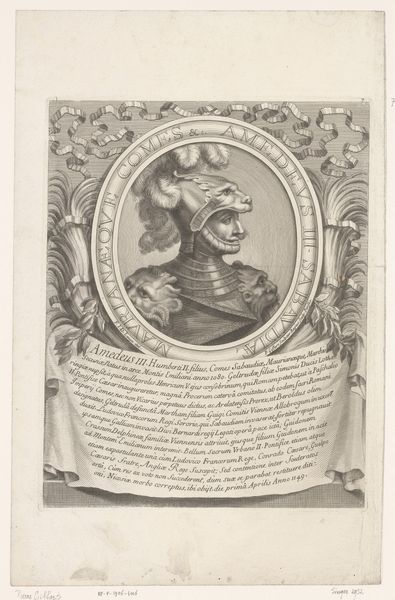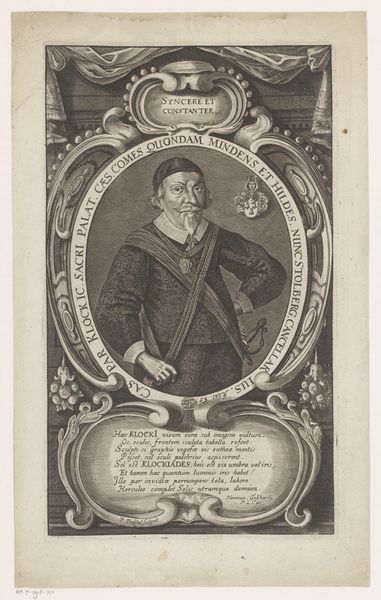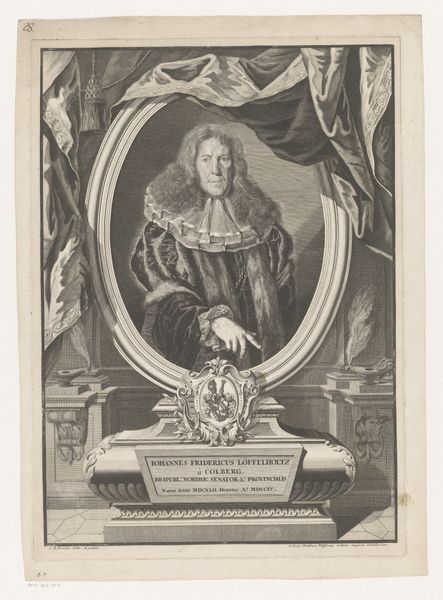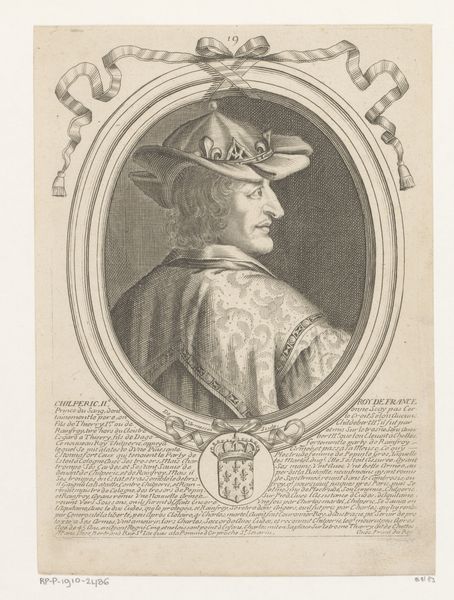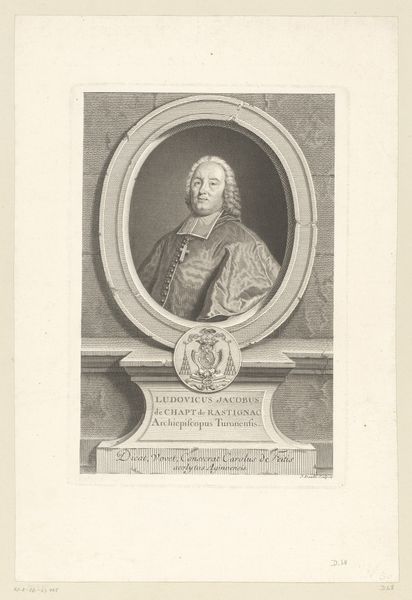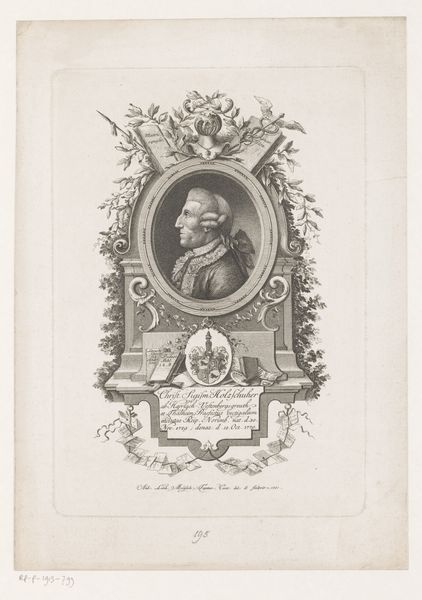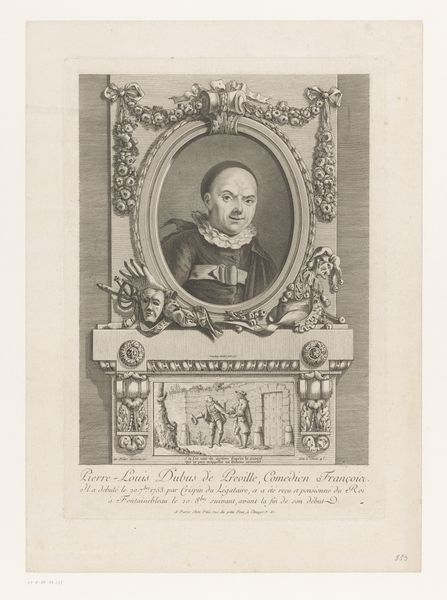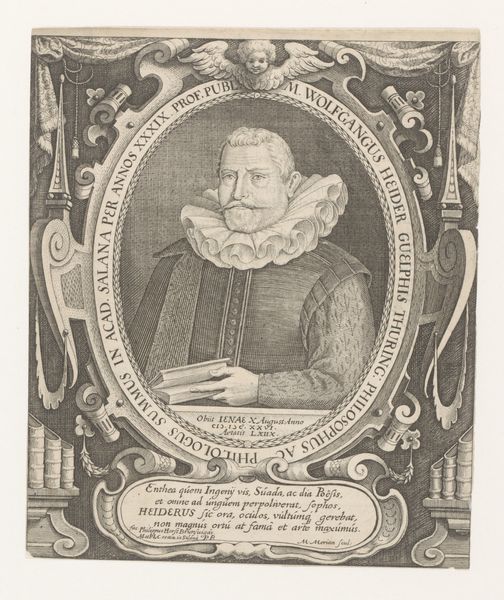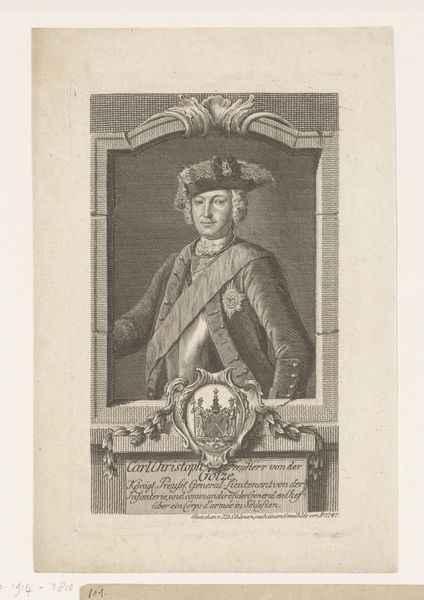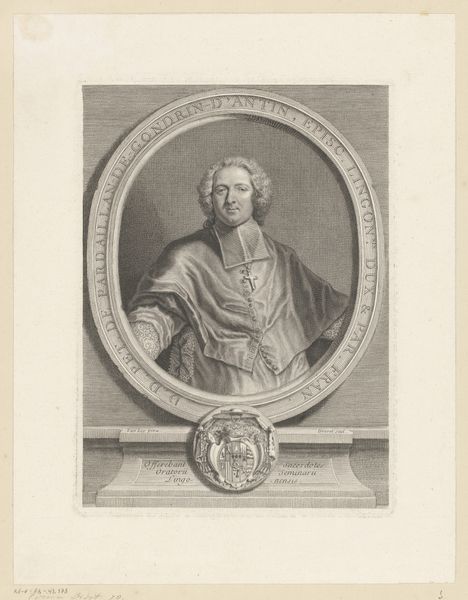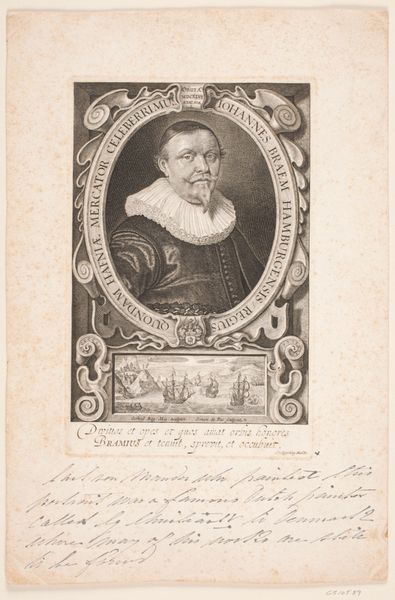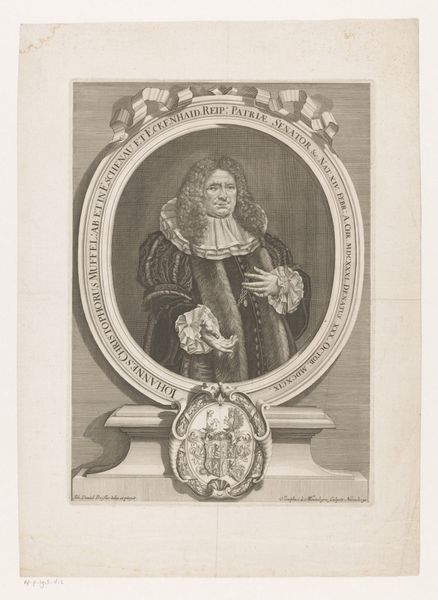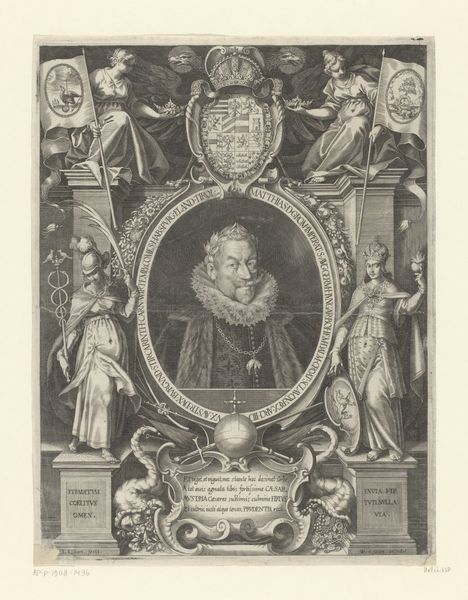
Portret van Andrea del Sarto op 42-jarige leeftijd in geornamenteerde omlijsting 1617
0:00
0:00
intaglio, engraving
#
portrait
#
baroque
#
intaglio
#
portrait drawing
#
history-painting
#
academic-art
#
engraving
Dimensions: height 304 mm, width 345 mm
Copyright: Rijks Museum: Open Domain
Curator: What strikes me first about this portrait is the weight of its ornate frame – almost as if it’s trying too hard to contain something. Editor: Interesting take! It is rather elaborate, isn't it? This is a 1617 intaglio print, an engraving actually, currently housed here at the Rijksmuseum. The work is titled "Portret van Andrea del Sarto op 42-jarige leeftijd in geornamenteerde omlijsting," which translates to "Portrait of Andrea del Sarto at the Age of 42 in an Ornamented Frame." Curator: Well, exactly! The subject, del Sarto, is an artist himself – so, it's a portrait of an artist by…who, exactly? Someone very keen on classical flourishes, judging by those cherubs and the almost sculptural quality around the central image. Editor: The print was produced by Theodoor Crüger, who, from my understanding, was referencing a self-portrait made by Andrea del Sarto himself. I think what interests me here is the self-referential nature. You've got Crüger paying homage to del Sarto's artistic talent by re-interpreting his likeness through this meticulously crafted engraving. Curator: A portrait *of* a portrait! That meta-narrative resonates through time. This piece feels steeped in art history – like a dialogue between artists across centuries, mediated by social expectations of what a portrait "should" be. Notice how the lettering is designed as an element in the framing device. Editor: I'm struck by the stark contrast between the softness of Andrea's face, brought to life through delicate hatching, and the rigid, almost overbearing, nature of the frame surrounding him. Perhaps it suggests the constraints – societal, artistic – within which even a celebrated Renaissance artist had to operate? Curator: Exactly. These prints also played an important function by broadcasting the image and status of an artist. And it also allowed a wider public access to at least an image of his works. It created celebrity. Editor: It’s that tension that really captivates me, I think – a delicate balance between immortalizing del Sarto and turning him into an almost unattainable icon. I didn't expect to feel such vulnerability peering out from under that impressive hat. Curator: For me, it’s that interplay between the artist and his image, reshaped by another hand and viewed through the lens of subsequent artistic conventions, which keeps me returning to this portrait. The frame tells as much a story as the face. Editor: A perfect reminder that every portrait is as much about the observer as it is about the observed, I suppose!
Comments
No comments
Be the first to comment and join the conversation on the ultimate creative platform.
